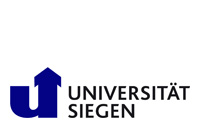
Suche
News
You are here
Title: Probabilistic Fusion of Multiple Distributed Sensors
Author: Lukas Köping
Supervisor: Prof. Dr. Marcin Grzegorzek
Reviewers: Prof. Dr. Marcin Grzegorzek and Prof. Dr. Frank Deinzer
Date of defence: 07.09.2018
Abstract:
The human perception of the environment is largely determined by the fact that a large
number of sensory impressions are recorded and processed simultaneously. In particular,
the combination of these individual information ensures that the brain is able to resolve
perceptual ambiguities. In the present work applications are shown, in which a multitude
of different sensors are fused. Most of the used sensors come from wearable devices such
as smartphones or smartwatches. In the area of activity detection, the data is used to
determine a person’s current activity. For this purpose, a method based on the creation
of a codebook is presented that extracts characteristic features for the later use in a
classification algorithm from the incoming time series data. This significantly shortens
the laborious step of manual feature extraction. Various experiments validate that this
method achieves results comparable to the state-of-the-art. Compared to many other
feature learning methods the codebook-based approach only requires very few intuitively
tunable parameters, so that a simple and fast implementation is possible. In addition, it
is embedded into an easily extendible general framework for human activity recognition.
Another application for sensor fusion is indoor localisation. Due to the strong signal
attenuation, satellite-supported navigation systems can hardly be used inside buildings.
The system introduced here fuses data from accelerometers, gyroscopes, barometers and
Wi-Fi measurements to track the position of a person inside a building. The data is processed
using recursive density estimation. For this, the state, the transition probability
and observation models must be developed appropriately. The result of this process is
a probability density over the estimated state space for each time of the estimation. In
the context of this work, various statistical models are presented which allow to integrate
data that represents human movement patterns. In particular, these are used as
additional information for the statistical state estimation.
Finally, a gesture recognition system is presented that uses recursive density estimation
to classify gestures. By including the pattern class as part of the state, a probability
density can be specified for all classes based on the incoming sensor values. As a basis
for comparison, average sequences are calculated from previously recorded training data.

